Mgr. Dominik Talla, PhD
dominik.talla(a)univie.ac.at
Josef-Holaubek-Platz 2 (UZA II),
1090 Vienna
Room number: 2B376
T: +43-1-4277-53255

Curriculum vitae [pdf]
Research Focus
Hydrothermal synthesis of single crystals of representatives of the kieserite group (kieserite, MgSO4·H2O)
Hydrothermal synthesis of single crystals of representatives of the kieserite group (kieserite, MgSO4·H2O), for investigations by FTIR spectroscopy, electron beam microprobe and powder as well as single crystal X-ray diffraction. The investigations take place at ambient as well as at low temperature and high pressure conditions. Possible structural transformations or polytypy at temperature and pressure conditions similar to those on Mars and the interior of the icy moons of Jupiter and Saturn will be detected. The influence of solid solution formation (partial replacement of Mg by Fe, Ni, Mn, etc.) on IR spectra, cell metrics and crystal structures will be determined and compared with remote sensing results (Mars rover and orbiter).
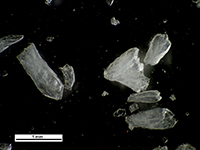
Fig. 1: Typical appearance of hydrothermally synthesized kieserite crystals (MgSO4·H2O).
Research on nominally anhydrous minerals
Research on nominally anhydrous minerals, e.g. studies on wulfenite, wolframite and halogen compounds (sellaite, villiaumite, halite, fluorspar); IR spectra of natural samples, as well as synthetically produced single crystal analogs are studied and compared.
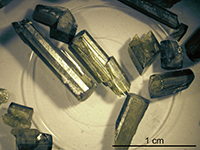
Fig. 2: Synthetic Mn-doped single crystals of MgWO4 (Huanzalaite).
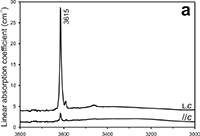
Fig. 3: Absorption bands in the IR spectrum of sellaite indicating the presence of hydrogen-containing structural defects.
Crystal synthesis for REE photoluminescence studies
Crystal synthesis for REE photoluminescence studies on selected accessory minerals (zircon, xenotime/monazite, titanite) to determine structure distortion and amorphization due to chemical heterogeneity and radiation damage.
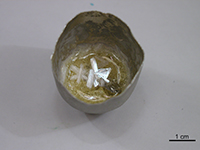
Fig. 4: Synthetic Eu-doped YPO4 single crystal for photoluminescence
investigations.

Fig. 5: Hyperspectral photoluminescence map of a zoned monazite crystal. The outer zone is strongly enriched in Th and Ca.
Experimental iron smelting in racing furnaces from the early Middle Ages
Investigation of both the role of the chemism, structure and mineralogy of the starting ore, as well as the type of charcoal, blower and wind supply of the furnace on the quality of the resulting metal product. The handling of ores rich in phosphorus (Lorraine minette), from which often only brittle and unforgeable steel is obtained, is extremely topical.

Fig. 6: Extraction of a dense iron lobe prepared from the limonite ore from Olomučany, Moravian Karst, Czech Republic.
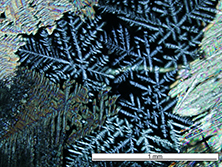
Fig. 7: Skeletal melilite crystals in a CaO-contaminated slag cake from the bottom of the racing furnace.
